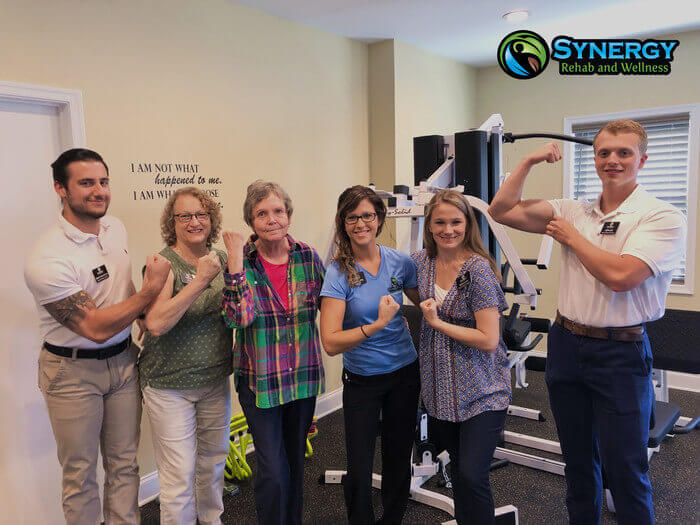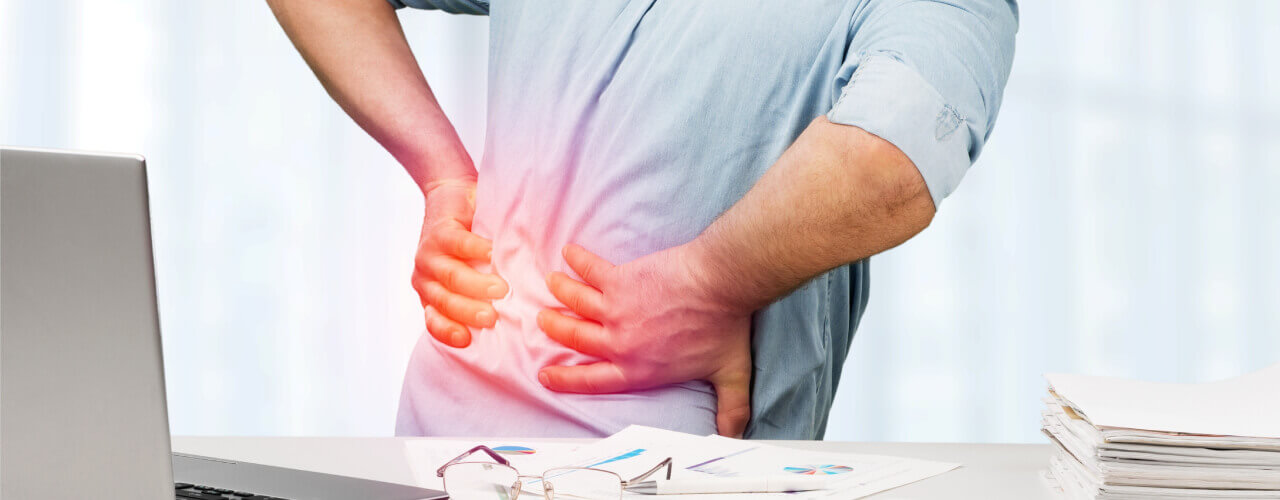Back and neck pain can have several underlying causes. For example, any changes in the spine’s anatomy can lead to back pain, such as lumbar degenerative disc disease, lumbar disc herniation, sacroiliac joint dysfunction, or osteoarthritis.
Lumbar degenerative disc disease occurs when the spinal discs experience “wear and tear,” typically due to aging. When the gel-like interior of the discs leak, irritation can occur causing lumbar disc herniation. Sacroiliac joint dysfunction happens when the sacroiliac joint has too much or too little motion, and osteoarthritis happens when the facet joints in the spine wear down and create friction.
Neck pain is most commonly caused by a muscle strain. This can occur in various ways such as whiplash, poor posture, or abnormal sleeping positions. Neck pain can also be caused due to cervical degenerative disc disease, cervical osteoarthritis, or a cervical herniated disc.
The pain associated with these conditions can range from moderate to severe, but physical therapy can luckily help ease most (if not all) of the pain. If you are suffering from back or neck pain, call Synergy Rehab and Wellness to schedule a consultation with one of our skilled physical therapists, and find out how physical therapy treatments can benefit you.
How will I be diagnosed?
If you’re experiencing back or neck pain, it is important to consult with your primary doctor right away. He or she will most likely perform a physical exam, and may want to take some x-rays or a magnetic resonance imaging (MRI) test. With an MRI, your doctor will be able to clearly see your soft tissues, ligaments, tendons, and blood vessels, which can provide evidence of where your back or neck pain is stemming from. Once this is determined, your doctor will suggest a course of treatment, which will likely include physical therapy.
Back pain and neck pain can lead to a loss of productivity, and it is a common cause for disability. Because of this, it is important to seek the assistance of a medical professional immediately if you are suffering from back or neck pain.
How will physical therapy relieve my pain?
Physical therapy is an effective treatment for both back and neck pain. The goals and expected outcomes of these treatments include:
- Reduction of pain and stiffness. By using passive treatments such as manual therapy, our physical therapist will help alleviate pain in the affected area and accelerate the healing process.
- Development of strength. Our physical therapist will create a specific exercise plan for your particular needs, which will aid in the strengthening of muscles in the affected area.
- Improvement of range of motion. Our physical therapist will implement flexibility exercises into your treatment plan, which will help increase the range of motion in your back and neck.
- Prevention of further issues. By learning proper body mechanics, you can avoid future injuries and prevent pain from recurring.
- Improvement of overall quality of life. Physical therapy can help you return to your normal routine much quicker, allowing for an overall improvement in the quality of life.
Your physical therapy treatments will be split into two categories: passive and active. Passive physical therapy treatments for back and neck pain may include ice and heat therapies, massage therapy, electrotherapy, or ultrasound. These help in relieving pain, stiffness, and inflammation. Active physical therapy treatments for back and neck pain may include any stretches and exercises that our physical therapist deems fit for your specific condition. Active therapy helps to increase strength and flexibility, in addition to relieving pain in the spine and affected muscles.
Why wait to begin your physical therapy treatments? Give our office a call today and begin your journey toward long-lasting pain relief!


